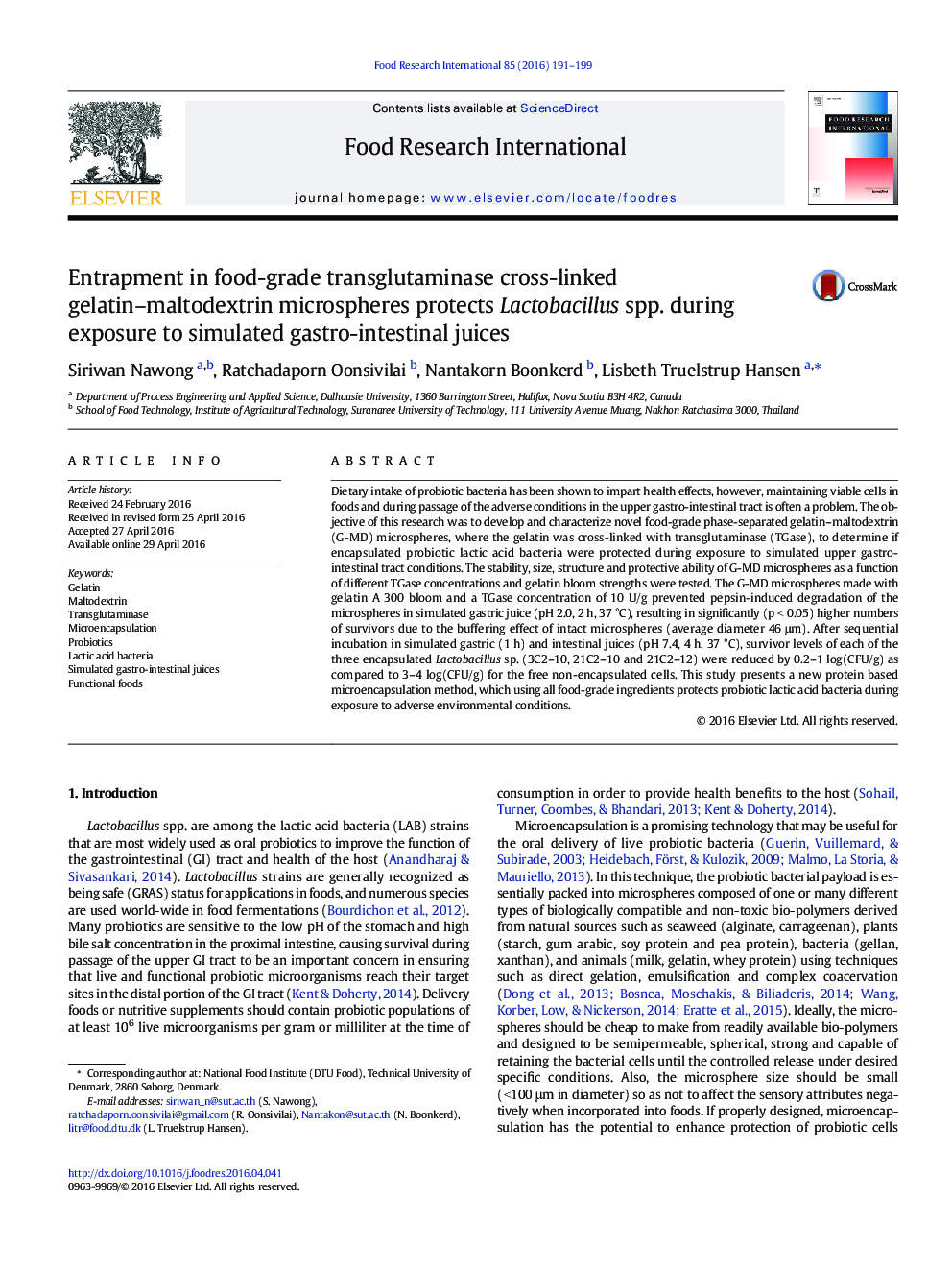| کد مقاله | کد نشریه | سال انتشار | مقاله انگلیسی | نسخه تمام متن |
|---|---|---|---|---|
| 4561052 | 1628463 | 2016 | 9 صفحه PDF | دانلود رایگان |

• Novel food-grade gelatin–maltodextrin (G-MD) microspheres were developed.
• Transglutaminase (TGase) stabilized the G-MD matrix in simulated gastric juice (SGJ).
• The microspheres consisted of a MD core with an outer G layer cross-linked with TGase.
• Entrapped probiotic Lactobacillus were located mostly in the G-MD interphase.
• The TGase G-MD microspheres improved Lactobacillus spp. survival in SGJ.
Dietary intake of probiotic bacteria has been shown to impart health effects, however, maintaining viable cells in foods and during passage of the adverse conditions in the upper gastro-intestinal tract is often a problem. The objective of this research was to develop and characterize novel food-grade phase-separated gelatin–maltodextrin (G-MD) microspheres, where the gelatin was cross-linked with transglutaminase (TGase), to determine if encapsulated probiotic lactic acid bacteria were protected during exposure to simulated upper gastro-intestinal tract conditions. The stability, size, structure and protective ability of G-MD microspheres as a function of different TGase concentrations and gelatin bloom strengths were tested. The G-MD microspheres made with gelatin A 300 bloom and a TGase concentration of 10 U/g prevented pepsin-induced degradation of the microspheres in simulated gastric juice (pH 2.0, 2 h, 37 °C), resulting in significantly (p < 0.05) higher numbers of survivors due to the buffering effect of intact microspheres (average diameter 46 μm). After sequential incubation in simulated gastric (1 h) and intestinal juices (pH 7.4, 4 h, 37 °C), survivor levels of each of the three encapsulated Lactobacillus sp. (3C2–10, 21C2–10 and 21C2–12) were reduced by 0.2–1 log(CFU/g) as compared to 3–4 log(CFU/g) for the free non-encapsulated cells. This study presents a new protein based microencapsulation method, which using all food-grade ingredients protects probiotic lactic acid bacteria during exposure to adverse environmental conditions.
Figure optionsDownload as PowerPoint slide
Journal: Food Research International - Volume 85, July 2016, Pages 191–199